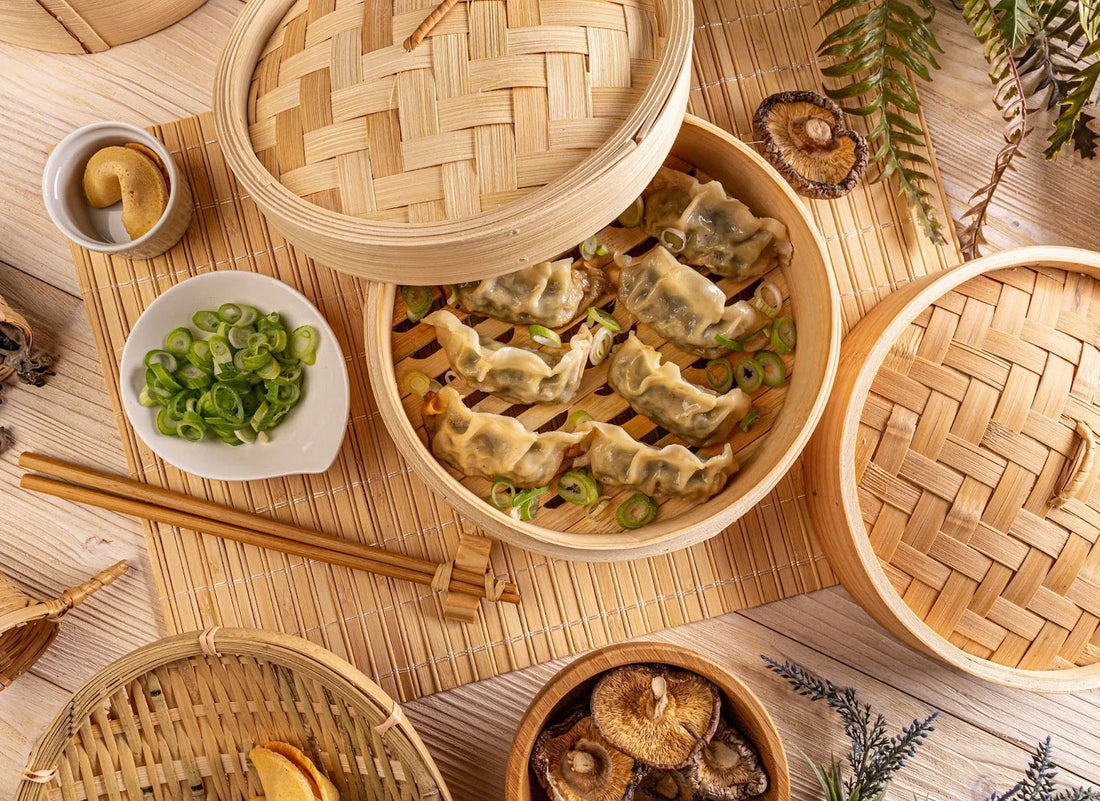
Why Dong Bei Dumplings Are a Must-Try: Traditional Recipe and Cooking Tips
Teilen
The aroma of steamed dough mingles with savory pork and cabbage, creating an irresistible invitation to the dining table. In the heart of Northern China's culinary tradition lies a treasure that has warmed homes and hearts for generations – dong bei dumplings. These plump, satisfying parcels represent far more than just a meal; they symbolize family gatherings, celebration, and the rich heritage of Northeastern Chinese cuisine.
Dong Bei dumplings stand apart from their regional counterparts through their generous size, robust flavors, and distinctive preparation methods passed down through countless generations. Whether you're a seasoned cook or someone just beginning to explore Chinese cuisine, understanding why these dumplings deserve a place on your table will open doors to authentic flavors and meaningful culinary experiences.
The Origins and Cultural Significance of Dong Bei Dumplings

The northeastern region of China, known as Dong Bei, encompasses three provinces: Heilongjiang, Jilin, and Liaoning. This area's harsh winters and agricultural abundance shaped a cuisine that prioritizes hearty, warming dishes designed to sustain families through long, cold months.
The History of Dong Bei Dumplings
Dong Bei dumpling traditions trace back over 1,000 years, evolving from simple flour-and-water packages into sophisticated culinary creations. The region's position along ancient trade routes allowed for ingredient exchanges that enriched local recipes, while the necessity of preserving food during brutal winters influenced preparation techniques still used today.
The dumplings became particularly significant during Chinese New Year celebrations, where families would gather to prepare hundreds of dumplings together. This communal cooking process strengthened family bonds and ensured that traditional dong bei dumpling recipes passed from one generation to the next without losing their authentic character.
Why Dong Bei Dumplings Are Special
What makes the dong bei dumplings extraordinary lies in their distinctive characteristics that set them apart from other Chinese dumpling varieties. These dumplings are notably larger than their southern counterparts, with thicker wrapper skins that provide a satisfying chewiness while containing generous amounts of filling.
The filling combinations reflect the region's agricultural strengths, featuring fresh cabbage, pork, and seasonings that create complex flavor profiles. Unlike delicate dim sum dumplings, dong bei dumplings are designed to be substantial, filling meals that could sustain hard-working families throughout demanding days.
Essential Ingredients for Dong Bei Dumplings
Creating authentic dong bei dumplings requires understanding the fundamental ingredients that give these dumplings their characteristic taste and texture.
The Essential Fillings

The foundation of exceptional dong bei dumplings recipe success starts with selecting quality ingredients:
- Fresh ground pork: Choose pork with adequate fat content (around 80/20 ratio) for juicy, flavorful results
- Napa cabbage: The star vegetable that provides sweetness and crunch when properly prepared
- Scallions: Fresh green onions add aromatic depth and mild onion flavor
- Fresh ginger: Grated ginger removes any gamey taste from pork while adding warmth
- Garlic: Minced garlic contributes essential savory notes
Flavor Enhancers
The magic of dong bei dumplings recipe authenticity comes from traditional seasonings:
- Soy sauce: Use light soy sauce for saltiness without overwhelming color
- Sesame oil: A few drops provide nutty richness that enhances other flavors
- Shaoxing wine: This rice wine adds complexity and helps tenderize the meat
- White pepper: Preferred over black pepper for its clean, sharp heat
- Salt: Essential for bringing all flavors together harmoniously
Step-by-Step Recipe for Dong Bei Dumplings
Making the Filling
Begin by preparing the cabbage, which requires special attention for optimal results. Finely chop the napa cabbage and sprinkle generously with salt, allowing it to sit for 30 minutes. This process draws out excess moisture that could make dumplings soggy. After 30 minutes, squeeze the cabbage firmly in a clean kitchen towel to remove as much liquid as possible.
Combine the ground pork with minced ginger, garlic, and chopped scallions in a large mixing bowl. Add soy sauce, sesame oil, Shaoxing wine, white pepper, and salt. Mix the ingredients in one direction using chopsticks or a wooden spoon – this technique helps develop the meat's texture and creates better binding.
Fold the prepared cabbage into the seasoned pork mixture, combining gently but thoroughly. The filling should hold together when pressed but remain light and not overly dense.
Preparing the Dough
While store-bought wrappers work acceptably, homemade dough elevates dong bei dumpling authenticity significantly. Combine all-purpose flour with warm water gradually, mixing until a shaggy dough forms. Knead the dough on a floured surface for 8-10 minutes until smooth and elastic.
Cover the dough with a damp cloth and allow it to rest for at least 30 minutes. This resting period relaxes the gluten, making the dough easier to roll and creating more tender wrappers.
Divide the rested dough into small portions, rolling each piece into a circle approximately 4 inches in diameter. The edges should be slightly thinner than the center to prevent thick, doughy seams when wrapped.
The Wrapping Technique
Proper wrapping technique distinguishes homemade dong bei dumplings from amateur attempts. Place about one tablespoon of filling in the center of each wrapper, being careful not to overfill.
Wet the edges of the wrapper lightly with water, then fold the dough over the filling to create a half-moon shape. Press the edges together firmly, creating pleats along the curved edge if desired. Ensure no air bubbles remain trapped inside, as these can cause dumplings to burst during cooking.
Cooking Methods for Dong Bei Dumplings
Traditional dong bei dumplings recipe preparation offers three distinct cooking methods, each producing unique textures and flavors.
Boiling
Boiling represents the most traditional cooking method for dong bei dumplings. Bring a large pot of water to a rolling boil, then carefully add dumplings one by one to prevent them from sticking together. The dumplings will sink initially, then float to the surface when nearly cooked.
Add a cup of cold water when the dumplings first float, bringing the water back to a boil. Repeat this process twice more – the "three boils" method ensures the filling cooks completely while maintaining tender wrapper texture.
Pan-frying
Pan-fried dong bei dumplings, known as potstickers, offer crispy bottoms with tender tops. Heat oil in a heavy skillet over medium-high heat, then arrange dumplings in a single layer without overcrowding.
Cook until the bottoms turn golden brown, approximately 3-4 minutes. Add water to reach halfway up the dumpling sides, cover immediately, and steam for 8-10 minutes until the water evaporates and the bottoms crisp again.

Steaming
Steaming produces the most delicate texture, allowing the natural flavors to shine without additional oils. Line a steamer basket with cabbage leaves or parchment paper to prevent sticking.
Arrange dumplings with space between each piece, steam over boiling water for 12-15 minutes. The translucent wrappers will indicate when the dumplings are adequately cooked.
Bringing Tradition to Your Table
Dong bei dumplings represent more than simple sustenance – they embody centuries of culinary wisdom, family traditions, and cultural identity. These substantial, flavorful packages connect modern kitchens with ancient practices, offering authentic tastes that commercial restaurants often struggle to replicate.
The process of making dong bei dumplings from scratch provides opportunities for family bonding, skill development, and cultural appreciation. Each fold of the wrapper, each perfectly seasoned bite, carries forward traditions that have sustained communities through countless generations.
By mastering this traditional dong bei dumplings recipe and understanding the cultural significance behind each technique, home cooks can create meaningful meals that satisfy both body and soul. The investment in time and technique pays dividends in authentic flavors, personal satisfaction, and the continuation of a remarkable culinary heritage that deserves preservation and celebration.

